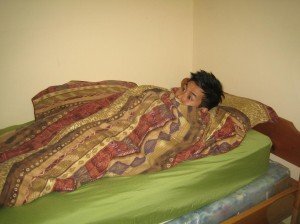Febrile seizures are defined as fits that occur if a child has fever. It generally occurs between the ages of 6 months up to 3 years.
It can be frightening especially if it is the first time. Nevertheless, the episode is generally harmless, and most children fully recover after.
What are the signs?
Febrile seizures typically lasts less than 5 minutes. Generally, the child:
- Turns stiff and the legs and arms start to twitch
- Loses consciousness and might soil or wet themselves
The child might even vomit and foam at the mouth while the eyes roll backwards. Once an episode ends, the child might be sleepy for up to an hour after.

What should I do after an episode?
In case the child is experiencing a febrile seizure, he/she must be placed in a recovery position. Remain with the child and note down the length of the episode.
Avoid placing anything inside the mouth during a seizure including medications since there is a slight risk of biting the tongue.
The child must be taken to the nearest healthcare facility or call for emergency assistance if the following are present:
- Child experienced his/her first episode
- Seizures last longer than 5 minutes with no signs of ceasing
- Seizure is triggered by another serious ailment such as meningitis
- Child is having trouble breathing
What are the causes?
The precise cause of febrile seizures is unknown, but associated to the start of a fever, usually 38 degrees C or higher.
There might also be a hereditary link to febrile seizures. In most instances, the fever is brought about by an infection such as middle ear infection, chickenpox, tonsillitis or flu.
More Information / Disclaimer
The information posted on this page on febrile seizures is for learning purposes only. Learn more about the possible causes and how it is managed by taking a standard first aid course with Saskatoon First Aid.
